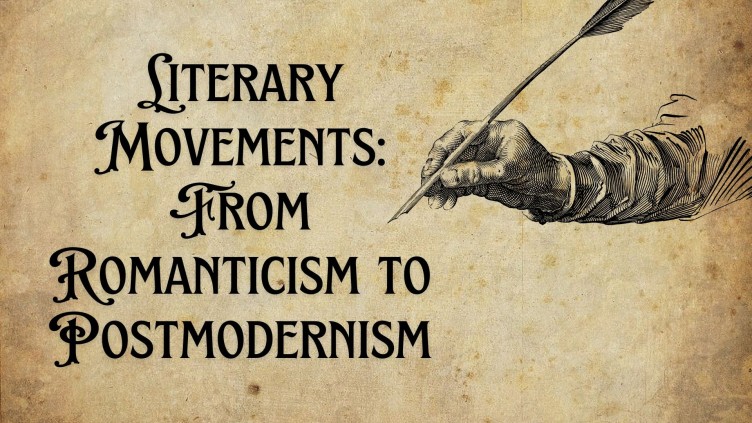Literary movements throughout history have shaped the way we perceive and create literature. From the idealism of Romanticism to the fragmentation of Postmodernism, each movement reflects not only the artistic trends of its time but also the socio-cultural milieu that influenced it. In this article, we’ll explore the evolution and key characteristics of two influential literary movements: Romanticism and Postmodernism.
Romanticism: Embracing Nature and Emotion
Romanticism emerged in the late 18th century as a reaction against the rationalism of the Enlightenment period. It celebrated individualism, imagination, and the beauty of nature. Writers of the Romantic era sought to evoke strong emotions and explore the depths of the human experience through their works.
Key Characteristics of Romanticism:
- Emphasis on Emotion: Romantic writers prioritized emotions over reason, often portraying intense feelings such as awe, wonder, and nostalgia.
- Love for Nature: Nature was seen as a source of inspiration and spiritual renewal. Poets like William Wordsworth and John Keats depicted nature as a powerful and healing force.
- Celebration of the Individual: Romanticism exalted the individual and their unique experiences. Characters often rebelled against societal norms and pursued their own paths.
- Interest in the Supernatural: Romantic literature often explored mystical and supernatural themes, reflecting a fascination with the unknown and the mysterious.
- Imagination and Creativity: Imagination was seen as a bridge to truth and a means of transcending everyday reality. Writers experimented with form and language to capture their imaginative visions.
Postmodernism: Fragmentation and Deconstruction
In contrast to the unified vision of Romanticism, Postmodernism emerged in the mid-20th century as a response to the uncertainties and complexities of the modern world. Postmodern literature is characterized by its skepticism towards grand narratives, its playfulness with language and form, and its exploration of fragmented identities and realities.
Key Characteristics of Postmodernism:
- Fragmentation and Metafiction: Postmodern writers embraced fragmentation, discontinuity, and the blurring of boundaries between reality and fiction. Metafiction, or fiction that self-consciously addresses its own fictionality, became prevalent.
- Irony and Parody: Postmodern literature often employed irony, parody, and pastiche to critique and subvert traditional literary conventions and cultural norms.
- Intertextuality: Postmodernism emphasized intertextuality, referring to the ways in which texts refer to and influence each other. Writers often incorporated references to other works of literature and popular culture.
- Deconstruction of Language: Postmodern writers questioned the stability and authority of language, experimenting with language to reveal its limitations and ambiguities.
- Cultural Relativism: Postmodernism challenged the notion of universal truths and embraced cultural relativism, recognizing multiple perspectives and interpretations.
Impact and Legacy
Both Romanticism and Postmodernism have left a lasting impact on literature and culture. Romantic ideals of individualism and emotional expression continue to resonate in contemporary literature and art. Meanwhile, Postmodernism’s questioning of authority and its emphasis on plurality and diversity have influenced the way we understand and interpret texts today.
In conclusion, literary movements like Romanticism and Postmodernism serve as windows into the evolving consciousness of humanity. They reflect the hopes, fears, and aspirations of their respective eras, challenging readers to rethink their perceptions of reality and truth. As we continue to navigate the complexities of the modern world, these movements remind us of the transformative power of literature in shaping our understanding of ourselves and the world around us.
For more insightful articles on literary movements and cultural phenomena, visit Riya’s Blogs. Stay tuned for updates and deep dives into the fascinating world of literature and beyond.







